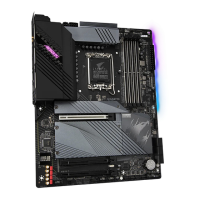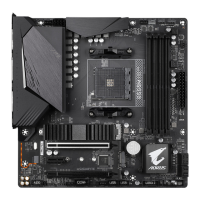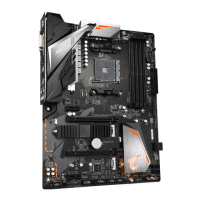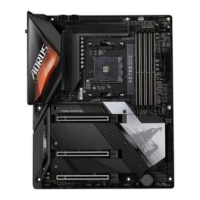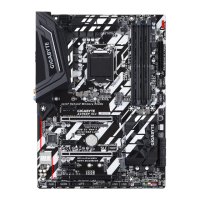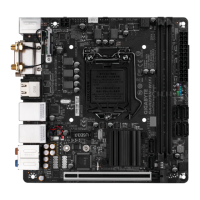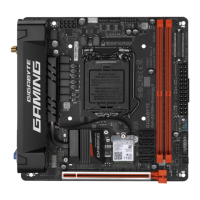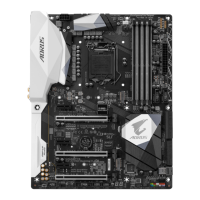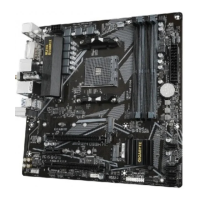B. Rebuilding an Array
Rebuilding is the process of restoring data to a hard drive from other drives in the array. Rebuilding applies only
to fault-tolerant arrays such as RAID 1, RAID 5 or RAID 10 arrays. The procedures below assume a new drive
is added to replace a failed drive to rebuild a RAID 1 array. (Note: The new drive must have equal or greater
capacity than the old one.)
Turn off your computer and replace the failed hard drive with a new one. Restart your computer. While in the
operating system, launch the Intel
®
Optane
™
Memory and Storage Management utility from the Start menu.
1. Go to the Manage menu and click Rebuild to another disk in Manage Volume.
2. Select a new drive to rebuild the RAID and click Rebuild.
3. The Status item on the right of the screen displays the rebuild progress. After the RAID 1 volume rebuilding,
the Status will display as Normal.
A-2: Installation Guidelines
1. Go to Settings\IO Ports\SATA And RST Conguration and make sure RST Control PCIe Storage
Devices is set to Manual. Then depending on which M.2 connector you install the Optane
™
memory in, set
the corresponding PCIe Storage Dev on Port XX item to RST Controlled.
2. After re-entering the operating system, launch the Intel
®
Optane
™
Memory and Storage Management
application from the Start menu. If you install more than one Optane
™
memory, please select which one
you are going to use. Then select which drive to be accelerated. Click Enable Intel
®
Optane
™
Memory. All
data on the Optane
™
memory will be erased. Make sure you back up the data before continuing. Follow the
on-screen instructions to proceed. When completed, restart the system.
3. Launch the Intel
®
Optane
™
Memory and Storage Management application from the Start menu and make
sure the Intel
®
Optane
™
Memory has been enabled.
4. If you want to accelerate the system drive, you can select specic folders, les, or applications to accelerate using
the Intel
®
Optane
™
Memory Pinning function. (The Optane
™
memory used must have at least 32 GB capacity.)
• An Optane
™
memory cannot be used to accelerate an M.2 PCIe SSD.
• If more than one Optane
™
memory is installed, you can select only one of them to accelerate
your SATA-based boot drive. The other(s) can only be used as data drive(s).
• Do not abruptly remove the Optane
™
memory. Doing so will cause the operating system to stop
functioning correctly.
• If you want to change/remove the Optane
™
memory, you must disable it using the Intel
®
Optane
™
Memory and Storage Management application rst.
• After enabling the Optane
™
memory, the related BIOS settings will remain even after a BIOS
update.
- 49 -
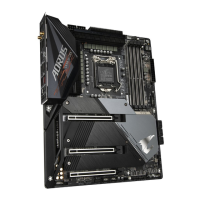
